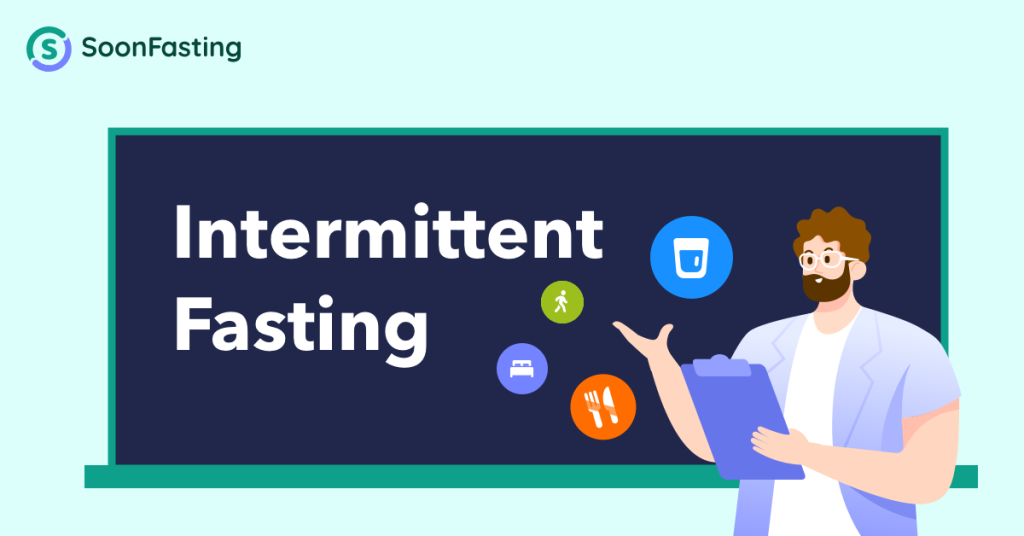Brad Pilon, who launched Eat Stop Eat in 2007, claims to have developed the concept while conducting graduate-level research on short-term fasting at the University of Guelph. Brad’s website states that Eat Stop Eat entails fasting for 24 hours twice a week, followed by five days of “responsible eating,” but not necessarily “dieting”.
What is Eat Stop Eat Intermittent Fasting?
Eat Stop Eat is based on the idea of periodically abstaining from food for short periods of time, such as 24 hours, to promote weight loss, improve overall health, and increase longevity. Specifically, it involves fasting for 24 hours once or twice a week, and then eating normally for the rest of the week. During the fasting period, only non-caloric beverages such as water, black coffee, or tea are allowed. The idea behind Eat Stop Eat is that by periodically giving your body a break from digesting food, you can increase your body’s ability to burn fat and improve your overall health.
The core concept of Eat Stop Eat involves implementing 24-hour fasting periods twice a week, which means going without calorie intake for a full day. During these fasting days, only non-caloric beverages like water, tea, or coffee are allowed. After completing the 24-hour fasting period, the individual returns to a regular eating pattern for the remaining five days of the week. During the eating days, Brad emphasizes the importance of “responsible eating,” focusing on balanced meals and nutrient-dense foods.
Unlike traditional diets that restrict specific food groups or require constant calorie counting, Eat Stop Eat doesn’t promote a rigid diet plan. Instead, it emphasizes intermittent fasting as a tool to help individuals manage their calorie intake naturally and achieve a sustainable approach to weight management and overall health.
One of the key points Brad emphasizes is that Eat Stop Eat is not about constant deprivation or chronic calorie restriction. The fasting periods are intermittent and do not cause a net reduction in overall calorie intake over the week. This flexibility may appeal to individuals who find traditional diets challenging to sustain in the long term.
How to Do Eat Stop Eat Fasting?
The Eat Stop Eat diet is relatively simple to implement. You simply decide to go without eating for 1 day or 2 days that are not consecutively spaced out throughout the week. This time without eating is referred to as fasting. You are allowed to eat anything you want for the remaining 5 to 6 days of the week, but it is advised that you choose a diet that is balanced and doesn’t exceed what your body requires.
Eat stop eat intermittent fasting plan isn’t so easy to take as other time-restricted plans like 16:8 during which you just need to cut your day into two windows, eating and fasting. You need to figure out each meal and control the time span between meals. If you find it difficult to conform to such schedules, an intermittent fasting app should be used to accurately manage your fasting schedule. For intermittent fasting beginners, however, an app for beginners should be used so as to easily start your fasting journey.
What are Eat Stop Eat Fasting Results?
Fasters are typically happy with their results after using the Eat Stop Eat method, according to evaluations of the Eat Stop Eat book on Amazon. Customers appear to value the program’s simplicity and adaptability. Some reviews claimed that they did not require any kind of stringent diets in order to lose a sizable quantity of weight and keep it off permanently.
A blogger claims to have reduced 4 kilos (9 pounds) during a 4-week challenge in one of these reviews. With this method, you will undoubtedly lose weight, whether it be more (or less) than you would otherwise.
Eat Stop Eat Fasting Meal Plan
You must only consume nutritious, unadulterated food when you are fully satiated. Planning ahead is crucial because it is simple to give in to junk food when the fast is over, especially in the beginning. The best option is to choose high-quality, organic proteins such as beans, lentils, seeds, and tofu, as well as unprocessed carbohydrates such as rice, wheat, oats, quinoa, sweet potatoes, and lots of green leafy vegetables. These foods are also essential for the development of healthy hormones and satiety.
Who are Fit for Eat Stop Eat?
People who want a plain, easy way to lose weight or improve other aspects of their health without having to restrict their diet or keep track of calories often turn to Eat Stop Eat.
See Also: The Ultimate Guide to Popular Intermittent Fasting Plans
References:
- https://www.annualreviews.org/doi/full/10.1146/annurev-nutr-071816-064634
- https://www.businessinsider.com/intermittent-fasting-daily-routine-2016-12
- https://www.ncbi.nlm.nih.gov/pmc/articles/PMC3630798/
- https://www.karger.com/Article/Abstract/212538
- https://www.ncbi.nlm.nih.gov/pmc/articles/PMC2645638/
- https://www.instagram.com/ketomom24/
- https://pubmed.ncbi.nlm.nih.gov/32199696/
- https://www.ncbi.nlm.nih.gov/pmc/articles/PMC7021351/
- https://www.positivityblog.com/eat-stop-eat/
- https://www.ncbi.nlm.nih.gov/pmc/articles/PMC7786967/
